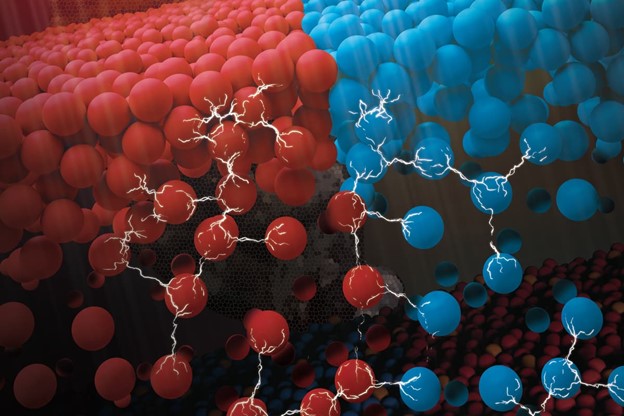
Inspired by cephalopods, scientists have created a new light-activated ink that can change color on demand. It’s made up of microbeads of different colors that rise or sink in response to different wavelengths of light, so that its surface appears as a specific color. This could be useful for new electronic displays or active camouflage systems.
Cephalopods like octopuses and squid are well known for their ability to change color, which they do using organs called chromatophores made up of tiny sacs of pigment that can expand or contract at will. The combinations of which colored pigments are visible or hidden at any given time gives the animal’s skin a certain color or pattern. This complex natural mechanism inspired researchers from the University of Hong Kong, Xiamen University and Hong Kong University of Science and Technology to create their new color-changing ink.
The ink contains microbeads made of titanium dioxide and dyed cyan, magenta and yellow. You might recognize that trio as the core ink colors of some printing systems, thanks to their ability to reproduce other colors through various combinations, a capability that’s being tapped for this process, as well. In this case, the microbeads are mixed together in equal amounts, and are designed so that the different colors will rise to the surface or sink to the bottom in response to light. By adjusting the wavelengths and intensity of the light, the surface can be coaxed into various colors through that same combination effect, producing patterns and even images.
The trick is the titanium dioxide in the microbeads, which creates a redox reaction in response to light that sends the microbeads in different directions. Each dye color responds to different wavelengths of light, sending the microbeads of that color up or down. So green light, for instance, will bring the yellow and cyan microbeads to the surface to make it look green, while the magenta ones sink to the bottom. In tests, the team demonstrated that the system was capable of reproducing a series of images that were projected on the surfaces.
There are a few caveats, however. Exactly how it functions in daylight or ambient light remains to be seen. Color reproduction and brightness need improvement, and the team says it’s fairly slow to switch images and colors—issues to be explored in future work. If successful, the technology could be useful for making new types of displays, electronic-ink devices, and even active optical camouflage.
The research was published in the journal Nature.
Source: University of Hong Kong via newatlast.com
 TEXTILES.ORG
TEXTILES.ORG


